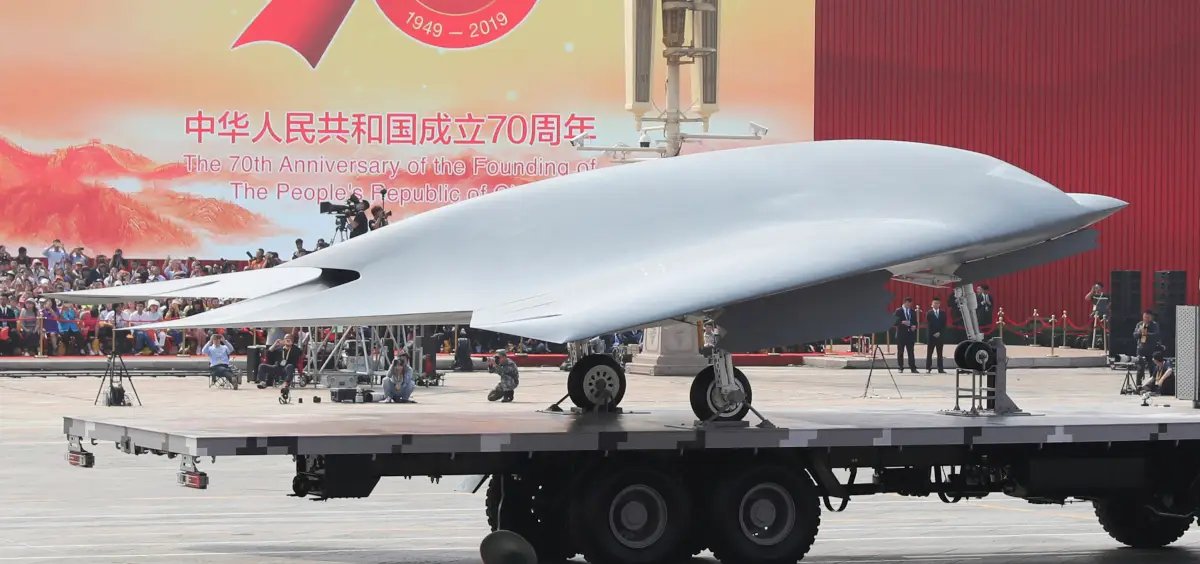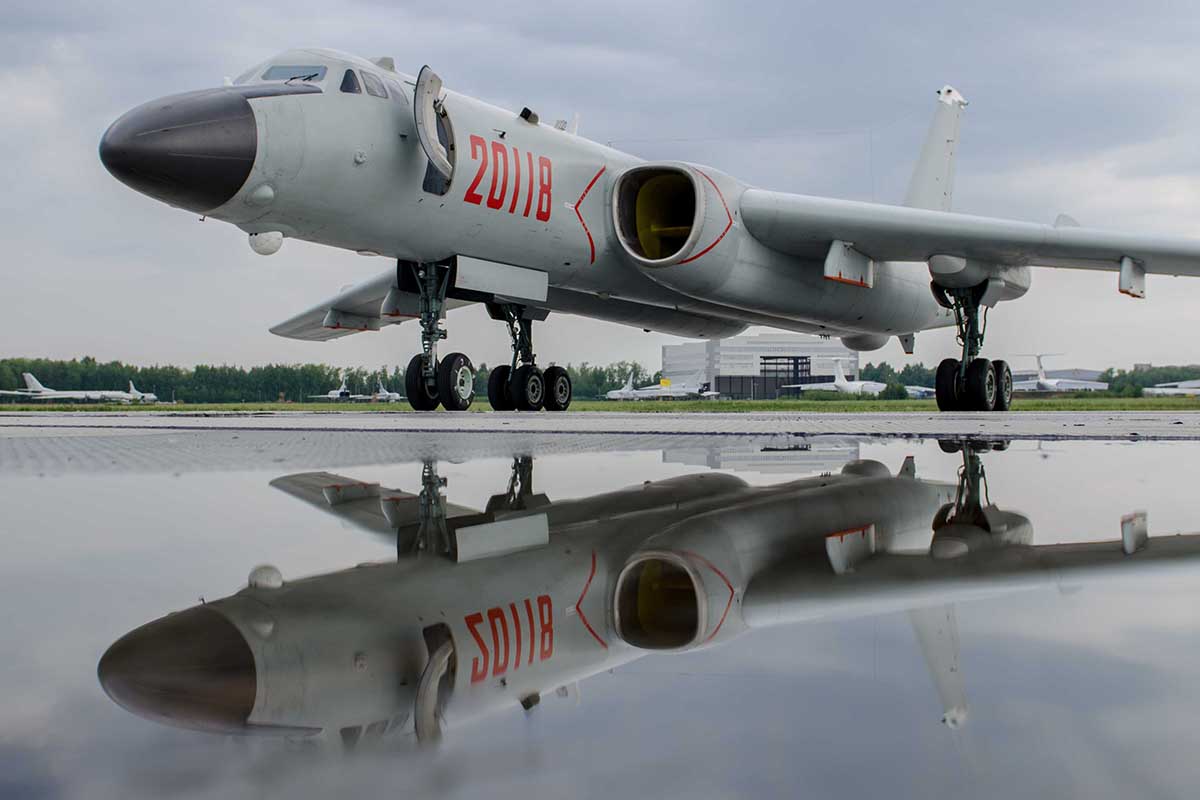China’s state-run media has dropped a strong hint that the first flight of the country’s long-awaited H-20, the next-generation bomber that’s expected to be a broad counterpart to America’s stealth bomber, could be imminent. An article, published yesterday in the Communist Party-affiliated Global Times newspaper reports that an official at the Chinese Flight Test Establishment, or CFTE, told visiting officials that China is preparing to conduct a flight test of a new aircraft. The remark is attributed to Ge Heping, the party chief of the CFTE, and the official visit is described as a “rally meeting … to mobilize personnel involved in the test.”
Another article, on the Chinese news website Guancha, quotes a news item that appeared recently on the WeChat instant messaging account of the CFTE. While this item recounts the same visit to the test center by high-ranking Chinese Communist Party officials, the standout part refers to “the development of a certain [aircraft] type” and its implied importance to the country. Although the article is deliberately vague, its description of the mysterious new aircraft as being of “strategic, historic significance” is certainly suggestive of the H-20.
Neither of those articles provides further details about the aircraft that’s referred to, although, in the past, the H-20 has been referred to as a “strategic project.”

With much speculation about the H-20 program, it’s not entirely surprising that many have drawn a connection between it and the news of the imminent flight test of a new aircraft emanating from the CFTE. Moreover, the bombastic description of the type is certainly in keeping with what little we do know about the H-20. After all, this is perhaps China’s most ambitious military aircraft project to date, its first fully homegrown long-range bomber, and a platform that has the potential to alter the strategic balance in the Asia-Pacific region by offering new means of striking key locations and infrastructure.
While it should be stressed here that it is highly unusual for China to release information about the upcoming first flights of new military aircraft types, the H-20 program has, in general, been treated somewhat differently, including fairly explicit references to specific U.S. stealth bombers.
In October last year, in an event that received little media attention at the time, an image was posted to the Weibo microblogging website that referred to the handover of a mock-up of a “special type” of aircraft. While that alone could count for numerous different types, the photo included the CEO and the chief designer from the Xi’an Aircraft Industrial Corporation, or XAC, apparently looking over the (unseen) mock-up. XAC is acknowledged to be the prime contractor responsible for the development of the H-20, alongside its 603 Aircraft Design Institute. Handover of a mock-up, or perhaps another kind of non-flying testing apparatus, such as an ‘iron bird’ full-scale systems test article, would also make sense at this stage in the program and would follow unconfirmed reports from July 2021 that a mock-up had been completed.
More surprisingly, given the highly secretive nature of the program, in January 2021, an official recruitment video for China’s People’s Liberation Army Air Force, or PLAAF, included a first official rendering of the H-20. This showed an aircraft obscured by a tarpaulin or sheet but still with a distinct resemblance to the U.S. Air Force’s B-2 Spirit and the future B-21 Raider, although it’s also entirely possible that the depiction in the video doesn’t accurately reflect the actual design.

Before this teaser, there was another video, this time from the state-run Aviation Industry Corporation of China (AVIC), of which XAC is a subsidiary. Released in 2018, this showed a computer-generated flying-wing style aircraft under a sheet with the text “The Next…” in English. At the time, much was made of this video’s similarity to a well-known Northrop Grumman Superbowl ad that provided a sneak preview of the B-21.

Neither of these official videos actually referred to the H-20 by name or revealed details of the aircraft’s role. Taken together, however, and with reference to radar cross-section test models, it’s now widely assumed that the forthcoming bomber will indeed have a flying-wing configuration and will be broadly similar in size to the B-2. That said, there are also rumors that the Chinese bomber will incorporate some unique features, with some speculation that it could have some kind of folding vertical tail surfaces.
Overall, however, very little is known about the H-20 and it’s clear that, despite possible hints, China wants to keep it that way, for now at least.
It’s thought that work on the H-20 began at XAC’s 603 Aircraft Design Institute in the early 2000s and that both subsonic flying-wing and supersonic delta-wing configurations were studied and yielded several scale models. It seems that by around 2011, the designers had settled on a subsonic flying wing, likely with four engines.
In terms of creating a functional flying-wing bomber, there have been suggestions that XAC may have benefited from experience gained with the GJ-11 Sharp Sword combat drone, as well as other drones of similar configuration, albeit in a much smaller size. Certainly, designs like the Sharp Sword are likely to have yielded important data on flight-control systems and radar-defeating technologies, the latter including the GJ-11’s dorsal engine intake.

Similarly, with at least two stealthy manned fighter jets (J-20 and FC-31) now flying, China has had plenty of opportunities to understand the practicalities of low-observable technologies, which are expected to play a prominent role in the H-20’s design, helping it survive when penetrating contested airspace. Indeed, U.S. intelligence now assesses that China has actually embarked on producing two new low-observable bombers, with the strategic H-20 expected to be complemented by a medium-size/medium-range fighter-bomber, likely a twin-seater with twin engines.
Meanwhile, analysts expect that the H-20 will emerge with an active electronically scanned array (AESA) radar, perhaps using conformal antennas and that it will have a primary armament of subsonic cruise missiles, carried internally on a rotary launcher.
All in all, the H-20 should represent an enormous advance over the later variants of the XAC H-6 that currently make up the PLAAF long-range bomber fleet. Despite the more recent addition of modern cruise missiles, as well as air-launched ballistic missiles and possible hypersonic weapons, the H-6 design dates back to the Soviet Tu-16 Badger of the early 1950s. The H-20 will offer far greater capabilities as a long-range strategic platform, including in the nuclear deterrent role. Ultimately, it’s easy to envisage how the H-20 might serve alongside specialist versions of the H-6, in a similar way to the future B-21/B-52 combination for the U.S. Air Force.

After reports in early 2013 that the H-20 program had been given the go-ahead for full-scale development, there followed a flurry of unofficial disclosures pointing to further progress on the aircraft. These included the completion of a 3D digital prototype, revelations of serpentine-shaped engine intake and exhaust ducts to reduce radar signature, the production of an ‘iron bird’ ground test rig, and tests of the flight-control system. There have also been sightings of the aforementioned radar cross-section test models that could fit the design.
In the past, there has been speculation that the H-20 could make an official maiden flight in 2023, which would again appear to lend broad credibility to reports connecting the CFTE statements with the bomber’s first flight. It’s also notable that the potential first flight of the H-20 is apparently so closely aligned with that of the B-21, despite delays to the U.S. program. It could well be that Beijing is actively trying to match the pace of the U.S. program, not only to ensure its own capabilities but perhaps also as a point of pride for its own rapidly advancing military aerospace industry.
On the other hand, there are other possible Chinese aircraft projects that could conceivably also be referred to as having “strategic, historic significance,” potentially also including civilian ones, although the H-20 still seems the most likely candidate.
Overall, the existence of the H-20 now seems to be very much an open secret and the number of official Chinese sources that appear to refer to the bomber, however obliquely, only seems to be growing. With that in mind, further developments in the H-20 program can probably be expected before too long.
Contact the author: thomas@thedrive.com
